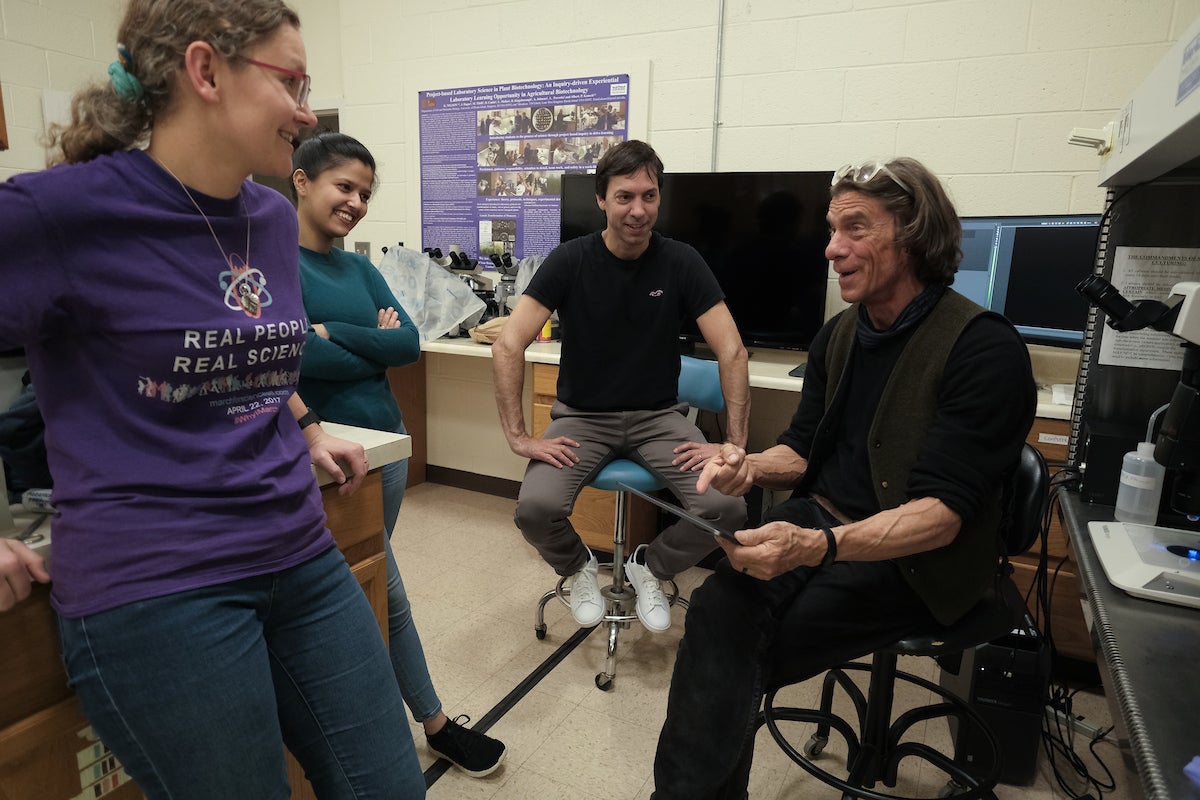KINGSTON, R.I. – May 12, 2022 – What began as a workshop to teach visiting plant biologists about editing DNA may end up revolutionizing plant biology research, according to Professor Albert Kausch, director of the Plant Biotechnology Laboratory at the University of Rhode Island.
Hosted by Kausch’s lab, the “Cereal Crop Plant Transformation and Genome Editing Training Workshop,” which ended April 20, brought together technologies, including DNA delivery, cell biology, molecular biology, and genome editing. A dozen participants from across the country and Argentina spent 10 days learning to alter the DNA of sorghum to improve it as a bioenergy crop.
“We can take cloned pieces of DNA and move them into plants. It’s a tedious process, it’s highly expertise intensive. That’s why these people are here,” Kausch said. “There are fewer than 10 labs in the country currently doing this type of work. By holding this workshop, we’re trying to democratize the transfer technology and make it a basic tool for plant biologists.”
The technology, which is transferable to other plants, involves editing the DNA of a single plant cell and culturing the cell into a whole plant. The current technology takes nine months to a year to grow the new plant and is very labor intensive, said Kausch, who has received millions of dollars in grants over the years to fund his research.
While conducting experiments during the workshop, Kausch and the scientists made a discovery that may reduce the time involved in culturing the plant from a year to as fast as a week. “I think that sooner or later what we have come up with will work. It’s just going to take a little elbow grease from here on. The concept is correct,” he said. “I’m just thrilled about it.”
The visiting scientists who took part in the workshops are excited about the knowledge they have taken home with them.
Zuzana Kocsisova, a molecular biology scientist with CTC Genomics in St. Louis, Missouri, sees application of the technique to her work. “I work in sugar cane, and a lot of the protocols in sorghum can potentially be used in sugar cane. Everything sorghum related is new to me, but I have used similar transformation methods before in different crops. But it feels like I’m finally learning it the correct way, instead of just figuring it out as I go.”
She anticipates bringing these techniques back to her company as well as to the company’s student interns.
Lucas Lieber, founder and chief executive officer of BioHeuris in Argentina, couldn’t have been happier with the workshops.
“I feel like this week has been like being in a Disney World of the plant sciences,” he said. “Besides having fun, I’m learning new techniques. It’s more than listening to a lecture or reading a paper; it’s hands-on work. When you’re struggling with something it’s easier to learn (hands on).
“We have been struggling with similar obstacles that Dr. Kausch encounters here. I think I’m now more knowledgeable about how this process really works. I have a better understanding of the theoretical procedures going on inside a seed. With this knowledge, I think it will be easier for me to direct the research and development of what we have going on in Argentina.”
In Argentina there are fewer acres of land for sorghum compared to the United States, said Lieber. But he sees a growing market for it in China and says that farmers in Argentina are eager to learn more. “There’s new technology coming to the seeds. Trade is increasing, and I really think that it’s going to explode in the future,” he said.
For CTC Genomics, the goal is no longer to be able to change a plant’s gene, but to get one of those genes into a plant cell and grow a new plant from it. “Every acre of Roundup Ready soy was at one point a single cell on a petri dish,” said Kocsisova. “We’re hoping to do that for new traits, but we must get that one cell and get that to grow back into a plant, and from the plant to a field, and we have to experiment with that.
“We can transfer the tools and methods that we’re learning here to sugar cane. Those will be the base of all the yield protection, yield increase, and traits that are better for the environment.”
Lieber agrees that the techniques learned in the workshop are highly versatile. “You can use this technique for so many different applications and even different species. We’re practicing on sorghum, but you can use this on any crop. This is like developing a Swiss Army Knife for crops.”
This release was written by Hugh Markey.

